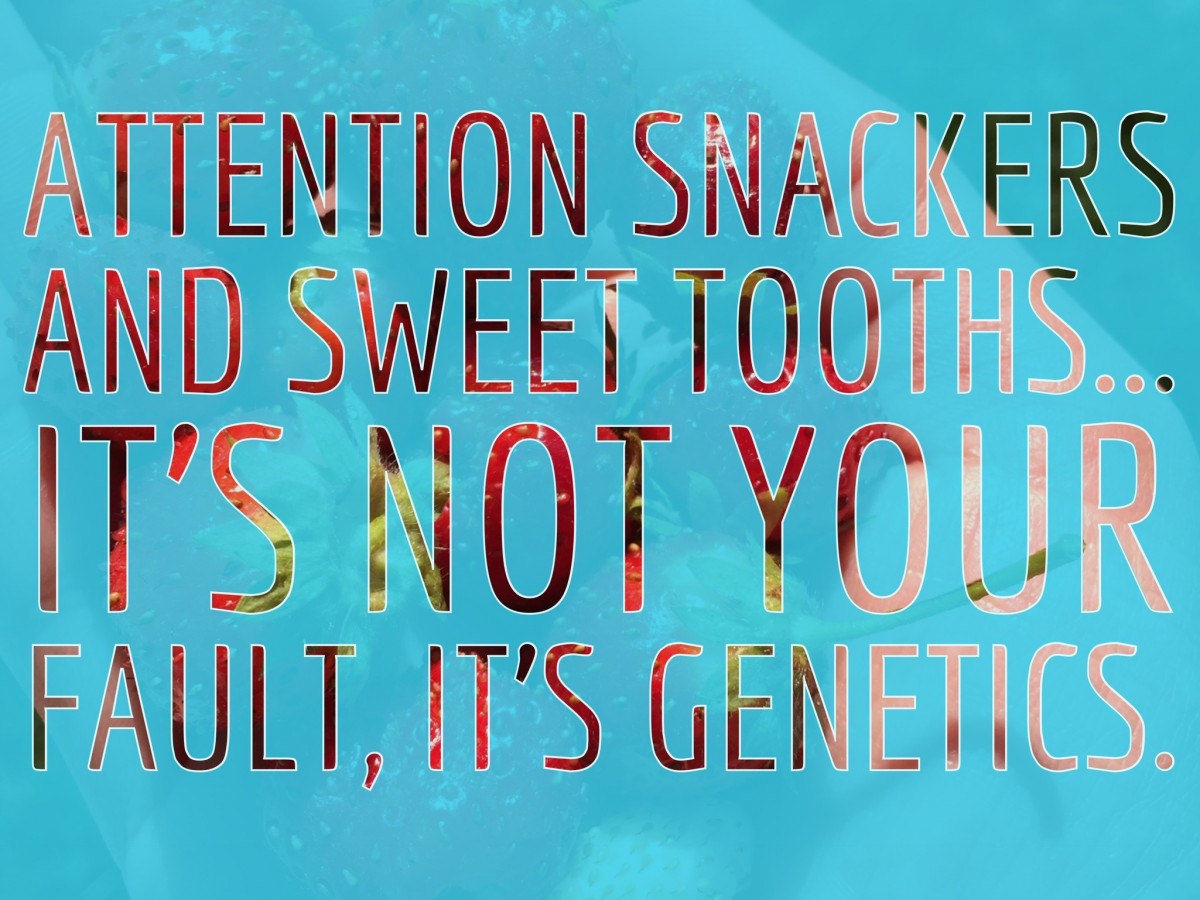Attention Snackers and Sweet Tooths: It’s Not Your Fault. It’s Genetic.
A new study from the University of Guelph in Ontario and published in the Journal Nutrients suggests that a child’s desire to crave snacks rich in fat or high in sugar
As well as having aversions to certain vegetables—can be blamed in their genetics.
The study looked at 47 children and discovered nearly 80 percent of them carried at least one of three genetic variants related to taste receptor cells in their taste buds, which can ultimately lead to poor snacking habits.
Doom and gloom, perhaps, but researchers say this information should be able to help parents tailor their children’s diets to help them make better choices and essentially overcome those unhealthy genetic tendencies.
Researchers determined their results by tracking the children’s diets over a three-day period and then testing their saliva to discover individual genetic taste profiles.
On average, snacks accounted for one-third of the children’s diets.
Half of these children were found to carry the genetic variant commonly associated with a sweet tooth, and these children ate more calories from sugary snacks than those without the genetic variant.
Also of note is that many of these sugary calories were consumed in the evening.
Meanwhile, those children who carried the genetic variant associated with both craving fat and being adverse to certain vegetables were found to eat more high-fat, dense foods than those who didn’t.
What to do, what to do…. if you’re a parent?
Here are 5 tips that go beyond just smothering everything in cheese to painlessly get your children to eat more vegetables and healthier foods in general.
5. Pure, pure, pure
Be it smoothies with strawberries, bananas and sneaky spinach, kale and avocados, or sweet potato, parsnip and leek soup with onions and parsley and all sorts of other vegetables, pure-ing vegetables into smithereens means your children won’t be able to complain about the green, chunky things they hate so much.
Don’t be lazy and buy pre-made smoothies and soups!
Make them yourself so you know exactly what’s going into them and keep them as sugar-free as possible. The great thing about soup is you can batch cook it and freeze it and have it on hand for days.
4. Dips dips dips
Similar to pure-ing vegetables, adding a healthy dip can go a long way. By healthy, I mean make your own condiments like mayonnaise—by whipping eggs yolks with garlic, lemon juice, apple cider vinegar, salt, and pepper—or guacamole, red pepper hummus or sugar-free homemade BBQ sauce.
Though making your own condiments sounds time-consuming, they’re like soups.
You can make them in a big batch and have them on hand for many meals! And to be honest, they don’t take as much time as you think. I made Paleo mayonnaise in less than 5 minutes last night.
3. Home Grown Veggies
Even kids get excited to eat vegetables when they get to plant the seeds themselves and then watch their own vegetables grow at home.
Even if you don’t have a huge yard— or even if you just have a patio with space for a pot or two—get your kids excited about growing their own food, and before you know it they’ll be taking an interest in vegetables.
2. Recruit a Sous Chef
The same is true of cooking and baking. Introduce your kids to the kitchen.
They’re more likely to eat the fruits of their own labor, and on your end, you suddenly have a free sous chef.
1. Homemade “Sleep Time” Candy?
This one might be the most genius of all…
Make your own gummy “candies,” infused with magnesium to help your kids sleep!
Here’s how you make them:
Combine 3/4 cup lemon or lime juice with 2 Tbsp. gelatin powder, 2 Tbsp. collagen, 5 Tbsp. magnesium citrate powder, some honey, maple syrup or stevia (to taste) and a pinch of sea salt.
Mix together and pour into small ice cube trays.
Put in the fridge for a couple hours and you have yourself some tasty little gummy candies.
Not only will they satisfy the nighttime sweet tooth, but the magnesium will help with sleep.
**Experiment and add other supplements, such as Vitamin D drops or crushed Vitamin C chews.
Getting your kids to eat better isn’t impossible. It just takes a little more work and creativity on your end. Be willing to put in the time and effort for their health.






